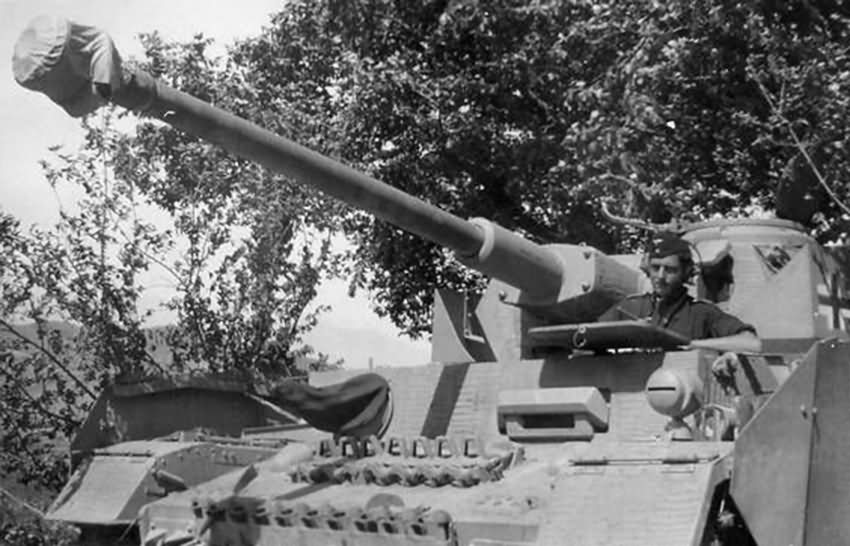The Fallschirm Panzer Division “Hermann Göring” was one of the elite units of the German military during World War II, originally established as part of the Luftwaffe. The division had its origins in the Luftwaffe Jaeger Regiment “Hermann Göring”, which was composed of handpicked volunteers. Over time, it evolved from a regiment into a formidable armored division with a complex history, fighting in multiple theaters of the war.
Origins and Early Structure
- Pre-War: The Jaeger Regiment “Hermann Göring” was part of the elite pre-war Luftwaffe forces.
- 1942: The regiment expanded into the Hermann Göring Brigade, which was primarily focused on training paratroopers and air landing units.
- Early 1943: It transitioned into a Panzergrenadier Division, and by mid-1943, it had evolved into a Panzer Division.
North Africa and Italy
- 1943, Tunisia: After its upgrade to a Panzer Division, it was deployed to Tunisia where it fought in the North African Campaign. The division was destroyed during the Allied victory in Tunisia in May 1943.
- Reformation: The division was quickly reformed in southern Italy and Sicily.
- Sicilian Campaign (July-August 1943): It played a major role in the defense of Sicily, but eventually withdrew to mainland Italy after the Allied invasion.
Redesignation as Fallschirm Panzer Division
- January 1944: The division was officially renamed the Fallschirm Panzer Division “Hermann Göring”, though the “Fallschirm” (parachute) designation was purely honorary. The division never functioned as a paratroop unit, despite being part of the Luftwaffe.
- Anzio, Italy (1944): The division became heavily involved in containing the Allied Anzio beachhead in Italy from January until the Allied breakout in May.
Eastern Front
- Summer 1944: In July, the division was transferred to the Eastern Front, specifically to the central sector, to help counter the Soviet summer offensive.
- Warsaw Uprising (August 1944): The division fought at Warsaw, attempting to suppress the uprising and halt the Soviet advance.
- East Prussia (October 1944): After Warsaw, it withdrew north to East Prussia, where it was tasked with forming the nucleus of the new Fallschirm Panzer Corps “Hermann Göring”.
Fallschirm Panzer Corps “Hermann Göring”
- The Fallschirm Panzer Corps consisted of:
- Fallschirm Panzer Division “Hermann Göring”,
- Fallschirm Panzergrenadier Division “Hermann Göring”.
This corps was modeled similarly to the Panzer Corps “Grossdeutschland”. The units of this corps fought in various battles in East Prussia and Poland, notably in the defense of Elbing, near Danzig.
Final Days
- January 1945: The division was separated from the Fallschirm Panzer Corps due to the Soviet breakthrough along the Vistula River. By this point, the Fallschirm Panzer Division “Hermann Göring” was designated as Fallschirm Panzer Division 1 “Hermann Göring”.
- East Prussia and Pomerania: The division continued to fight in the collapsing Eastern Front, suffering severe losses in the battles near Elbing and in the broader retreat through East Prussia.
- End of the War (May 1945): By the end of the war, the division had been reduced to a Kampfgruppe (battle group) and was overrun by Soviet forces while defending positions with the 4th Panzer Army.
Organizational Structure (1944)
At its peak in 1944, the division’s structure was as follows:
- Panzer Aufklärungs Abteilung “Hermann Göring” (Reconnaissance Battalion),
- Panzer Regiment “Hermann Göring” (three battalions),
- Panzergrenadier Regiment 1 “Hermann Göring” (two battalions),
- Panzergrenadier Regiment 2 “Hermann Göring” (two battalions),
- Panzer Artillerie Regiment “Hermann Göring” (four battalions),
- Flak Regiment “Hermann Göring” (anti-aircraft),
- Panzer Nachrichten Abteilung “Hermann Göring” (signals),
- Panzer Pioniere Bataillon “Hermann Göring” (engineers),
- Ersatz Bataillon “Hermann Göring” (replacement battalion).
Special Elements
- Honorary Title: The division’s Fallschirm (parachute) designation was honorary, with no significant connection to paratrooper operations.
- Elite Nature: Like other elite formations such as Grossdeutschland, the “Hermann Göring” division received better equipment and manpower compared to typical Wehrmacht units, including tanks, armored vehicles, and anti-aircraft guns.
The Fallschirm Panzer Division “Hermann Göring” was a key part of the German military’s elite forces, starting from its origins as a Luftwaffe regiment to becoming a powerful Panzer Division. It fought in numerous major campaigns, including the North African Campaign, Sicily, Italy, the Eastern Front, and the final defense of East Prussia. Despite its elite status, the division, like most German units, was worn down by continuous combat and logistical shortages and was eventually destroyed in the closing months of World War II.
